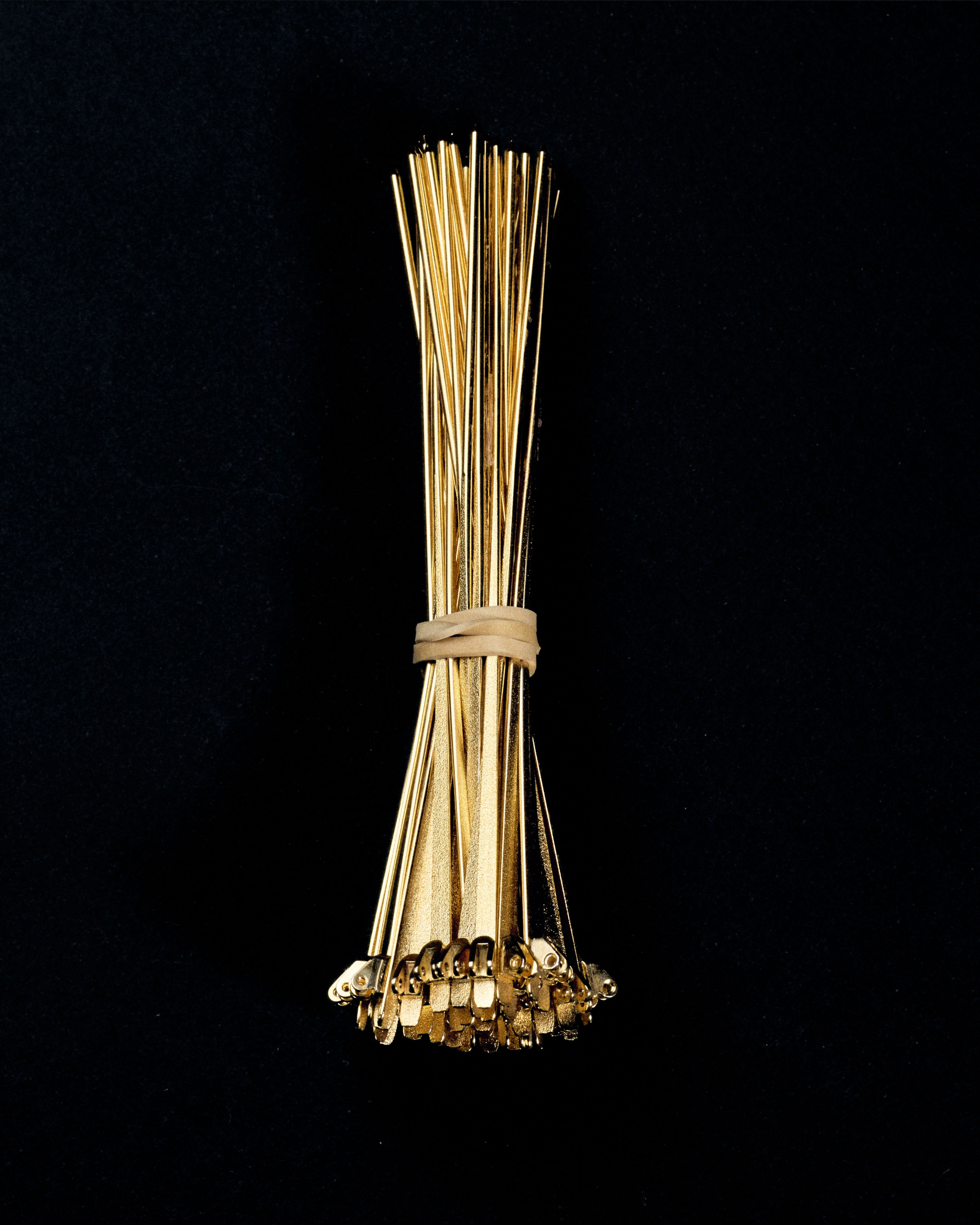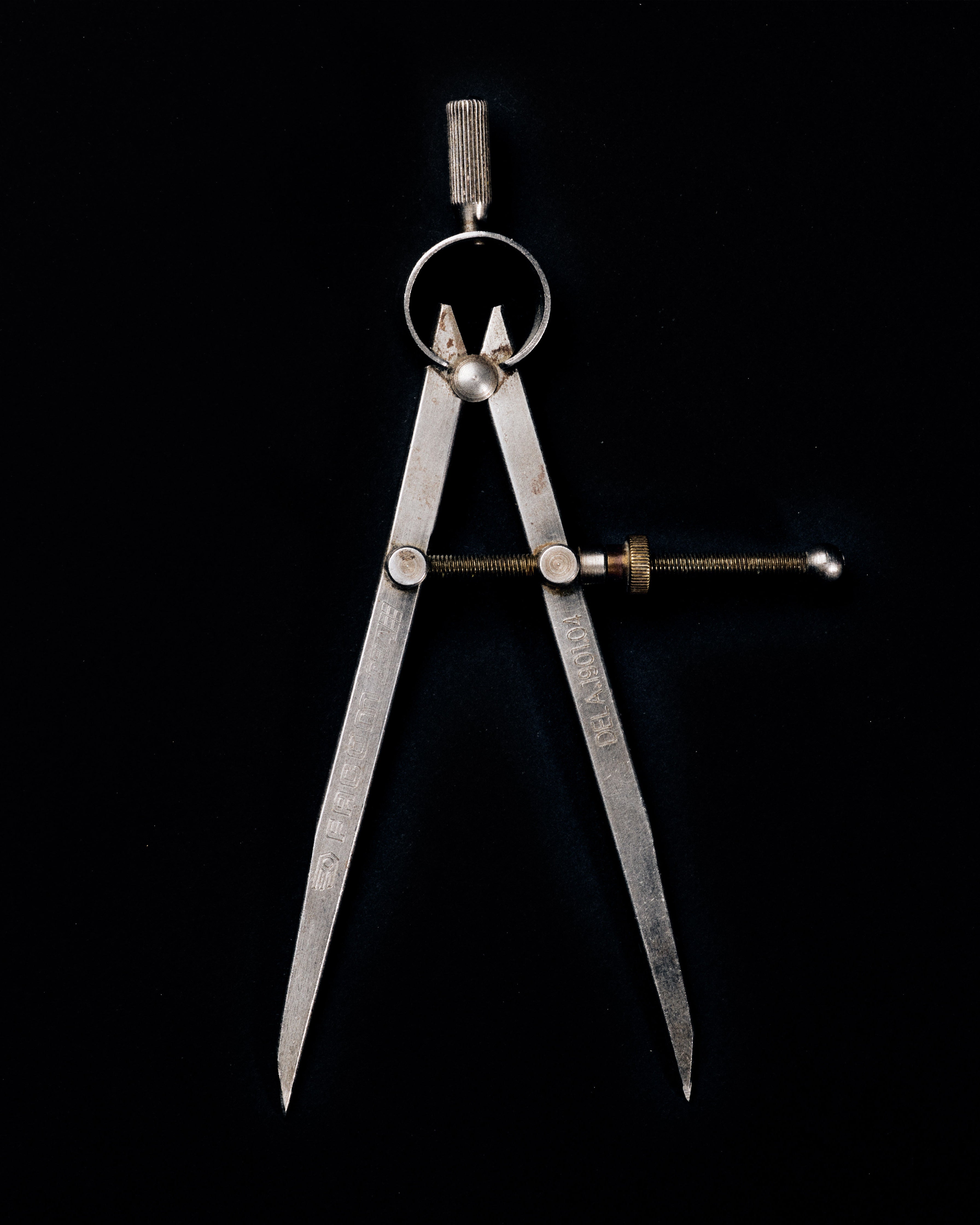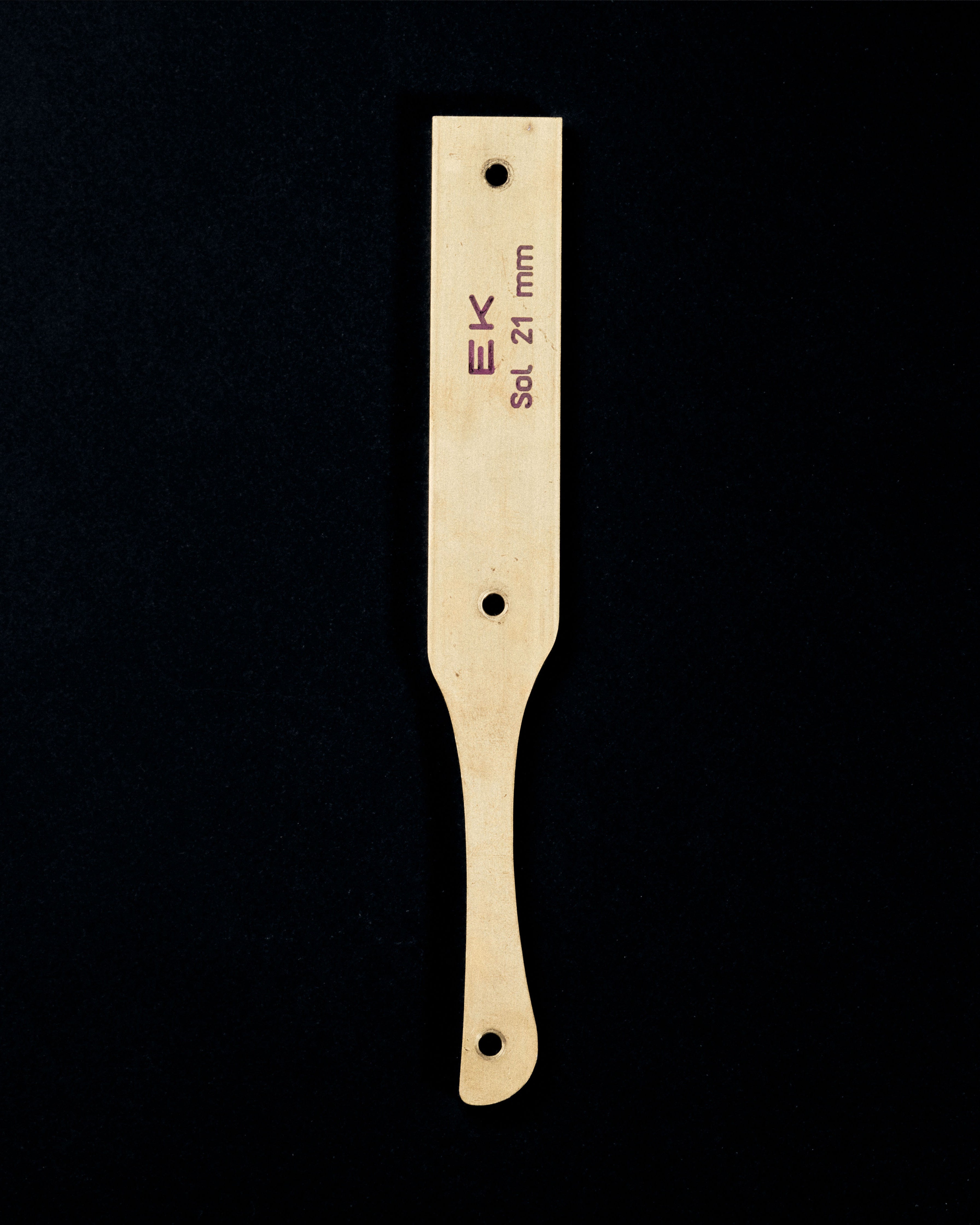A timeless craftsmanship
The name Emmanuelle Khanh embodies a rich history, the nobility of handcrafted work, and a distinctly French identity in style and expertise. The brand is committed to promoting local production through an artisanal process and high-quality craftsmanship. It honors its partners, who meticulously handcraft each piece with the utmost care. In total, more than 80 steps are required to create a single pair of glasses.
FIRST CUTTING AND DRYING
Emmanuelle Khanh frames are cut from acetate, an organic material obtained by the lamination of cotton flakes and wood cellulose. It is a flexible, lively material that offers endless possibilities of coloring and patterns. The acetate sheets are cut into small rectangles (labs), the size of the frame, which are dried in an oven to stabilize the material and rid it of residues of glue and plasticizers.
STICKING THE CLEATS
A cleat - a square of crystal material - is sicked on each lab using friction, in order to have an extra thickness at the nose, so deeper pads and more comfort.
3CUTTING AND SHAPING THE FRONT
In each rectangle of material, a front is carved: five or six different mills are shaping the eyes, the outside, and the internal and external bevels. The front is then heated, making the material more malleable, then pressed against a curved mold.
INJECTING THE HINGES
The welded hinges are shot into rectangles of acetate that will become the temples. They will give its support and strength to the frame. They are injected into the material, the acetate being made softer in its center thanks to a warm thread.
CUTTING AND ENGRAVING THE TEMPLES
The temples’ labs already shot are cut according to the shape of a metal tool. A cutter, connected to a vertical mark, cuts the acetate. The branches are then laser engraved one by one - inside, the markings indicating the reference and dimensions of the bezel; outside, the logo placement.



PLACING THE LOGO UNDER RESIN & SPATULA
On each temple, the EK trim is placed by hand, one by one with a pliers, in the laser incisions. They are then coated with a transparent resin. The resin must dry for several hours before being leveled. The spatulas of the temples are then heated and curved to bring comfort behind the ears.
ULTRASONIC TRAY
The front and temples are put in an ultrasonic tray. Ultrasound eliminates the finest acetate chips that are due to the different cutting steps.
BARREL POLISHING
The front and temples are put in a horizontal barrel full of wood chips covered with polishing paste. Once closed, it rotates for a week, during which the chips gently abrade and smooth the surface of the acetate. Beforehand, the metal hinges are covered with wax to avoid scratches. During the week, the future glasses pass in three different barrels, from the strongest to the finest, and make several
round trips in the ultrasonic bins. When leaving the barrels, the pieces are polished and shiny.
ASSEMBLING AND ANGLING THE TEMPLES
On the temple coming out of the barrels, the laser engraved inscriptions are filled with golden paint and the protections on the hinges removed one by one. The front and temples are then assembled, screwed by hand. The connection between the open temples and the the front is adjusted, in order to be smooth.
FINAL POLISHING
The frame is one last time polished using a fluffy wheel rotating at a high speed. This last step makes it possible to dust it off of any chips created during the assembly of the temples, and to make disappear the micro-scratches that would remain of the barrels.
CUTTING AND ASSEMBLING THE LENSES
The lenses are cut only once the frame is polished, to perfectly fit the final shape of the eye. Each pair of lenses is carefully placed in a die-cut. The pressure should not be too strong, not to break the glass, or not enough, to cut it clean. The lenses are assembled with the frame. It is finally complete.






